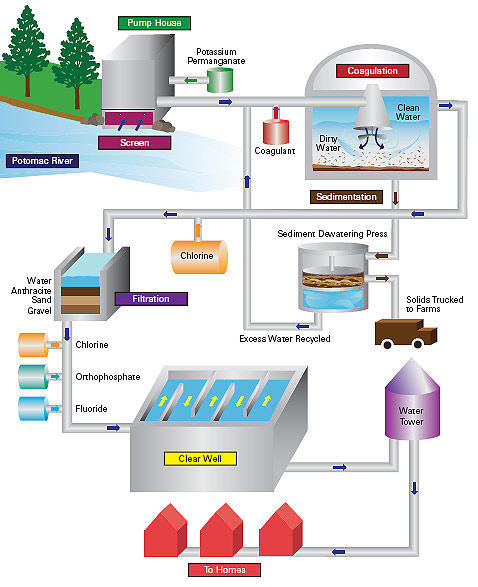This reflective report analyses New York City’s drinking water quality and the treatment process. The paper identifies the contaminants in New York City water and analyzes these contaminants through a broad spectrum approach.
The New York City Water Report
The fluoride contaminant violated the maximum requirement level in the New York drinking water. The fluoride content of 2.2 mg/L in this water is almost double the concentration level of 1.0mg/L as situated by the New York City Health Code.
The calcium contaminant was very close to violating the maximum contaminant levels in the New York City drinking water. The concentration of calcium contaminant was recorded at 5.3 mg/L against an average of between 4.4 and 6.7 mg/L.
Contaminant detected: Nitrate
Water Treatment Plant Configuration
Water in its natural source is often subject to fecal contamination, primarily derived from processes of decomposition of organic nitrogenous material present in water.
While ammonia (ammonium) and nitrites indicate an organic contamination, there are several harmless contaminants present in water such iron and calcium among others. The diagram below represents a typical water treatment plant summarizing the processes involved in water treatment.
Schematic water treatment diagram

Steps involved in the water treatment
Step 1: Screening
The raw water is passed through a sieving screen to eliminate relatively large pieces of foreign material such as rocks, leaves, and sticks. At this stage, Potassium permanganate chemical may be used when the raw water has traces of algal bloom.
Step 2: Coagulation
This involves passing the raw water into a coagulation tank where visible particles that remained after the screening stage are separated and channeled to an ejection tank for farm use.
Step 3: Sedimentation
The water is then moved to a special tank that is designed to allow for any remaining particle in the water to patch up at the base of the sediment tank.
Step 4: Filtration
The dual media in the filtration tank consisting of anthracite and sand ensures that all the visible pollutants are eliminated.
Step 5: Disinfection
Regulated amount of chlorine is passed into the water to inactivate any pathogens that might have passed through the previous steps. At this stage, controlled quantity of fluoride ingredient is added to the disinfected water to reduce incidences of tooth discoloration and decay upon use of this water.
Step 6: Storage and distribution
The fully treated water is then channel to storage tanks for a while before being distributed to the final user.
Conclusion
Water treatment is carried out by using special purification equipments that measured the 4 parameters of contamination (nitrates, phosphates, chlorides and sulfur). However, the concentration of each parameter detected varies due to the conditions and flow of water from its source. There are significant differences between the parameters, pH, temperature and dissolved oxygen in different water sources.